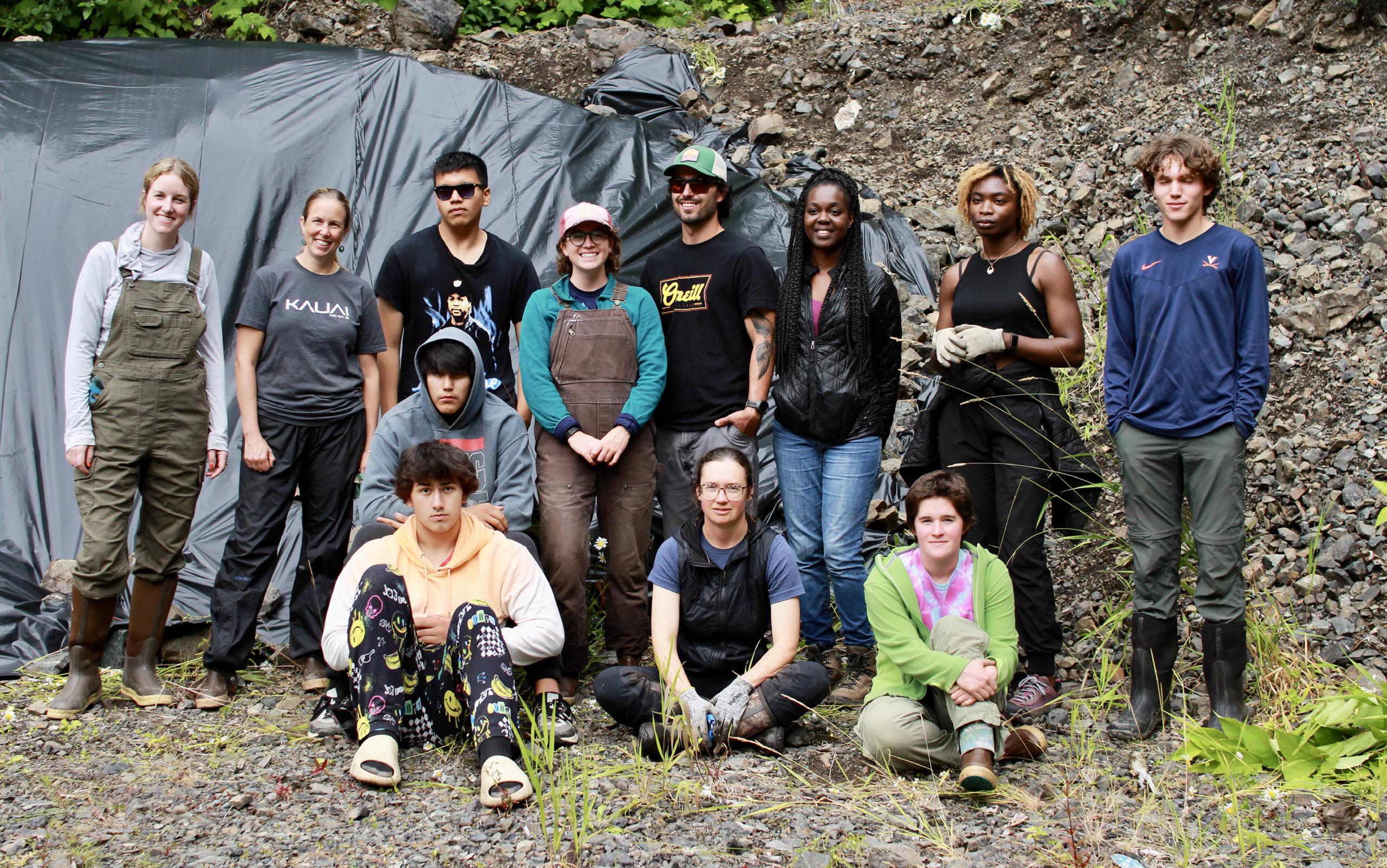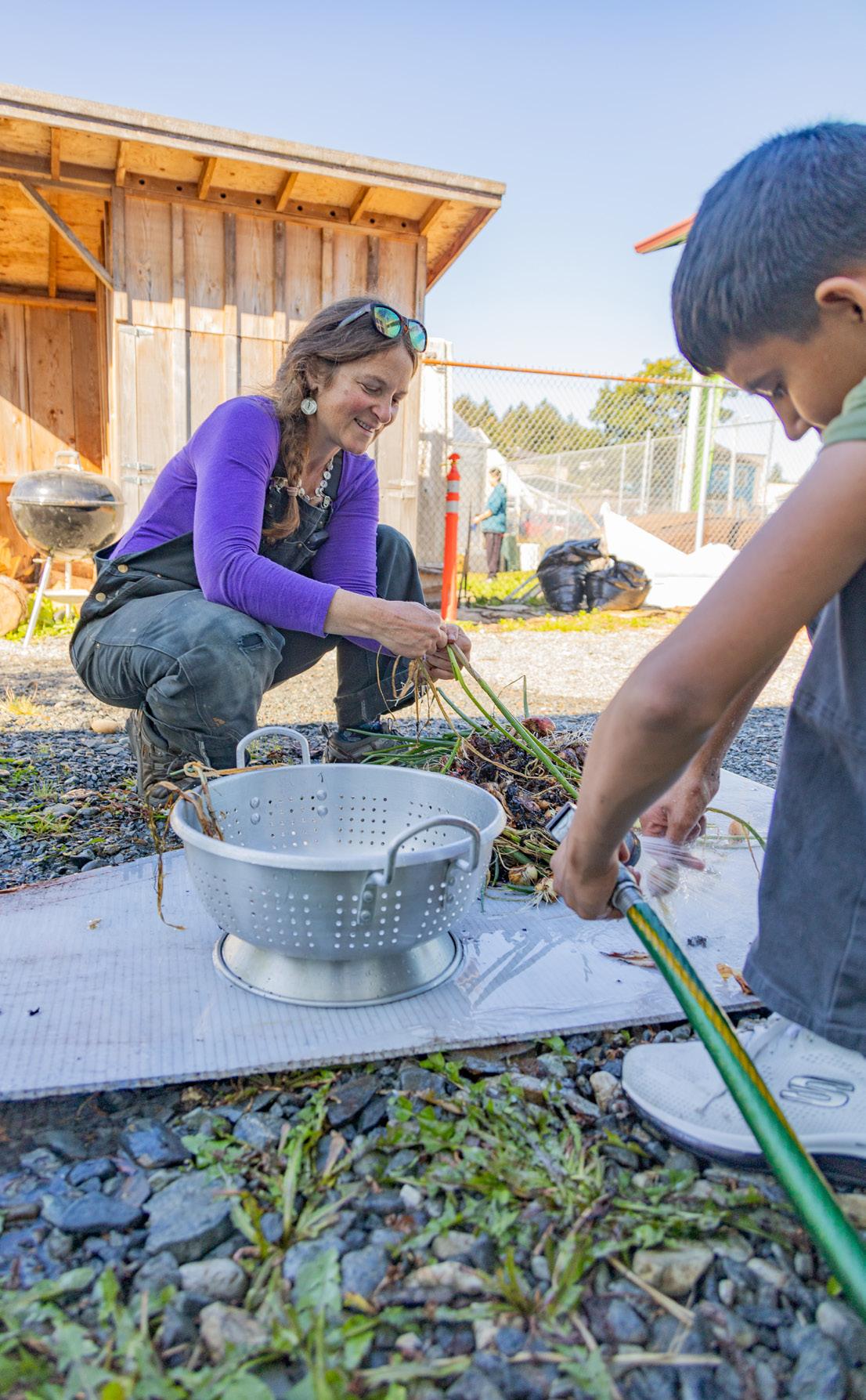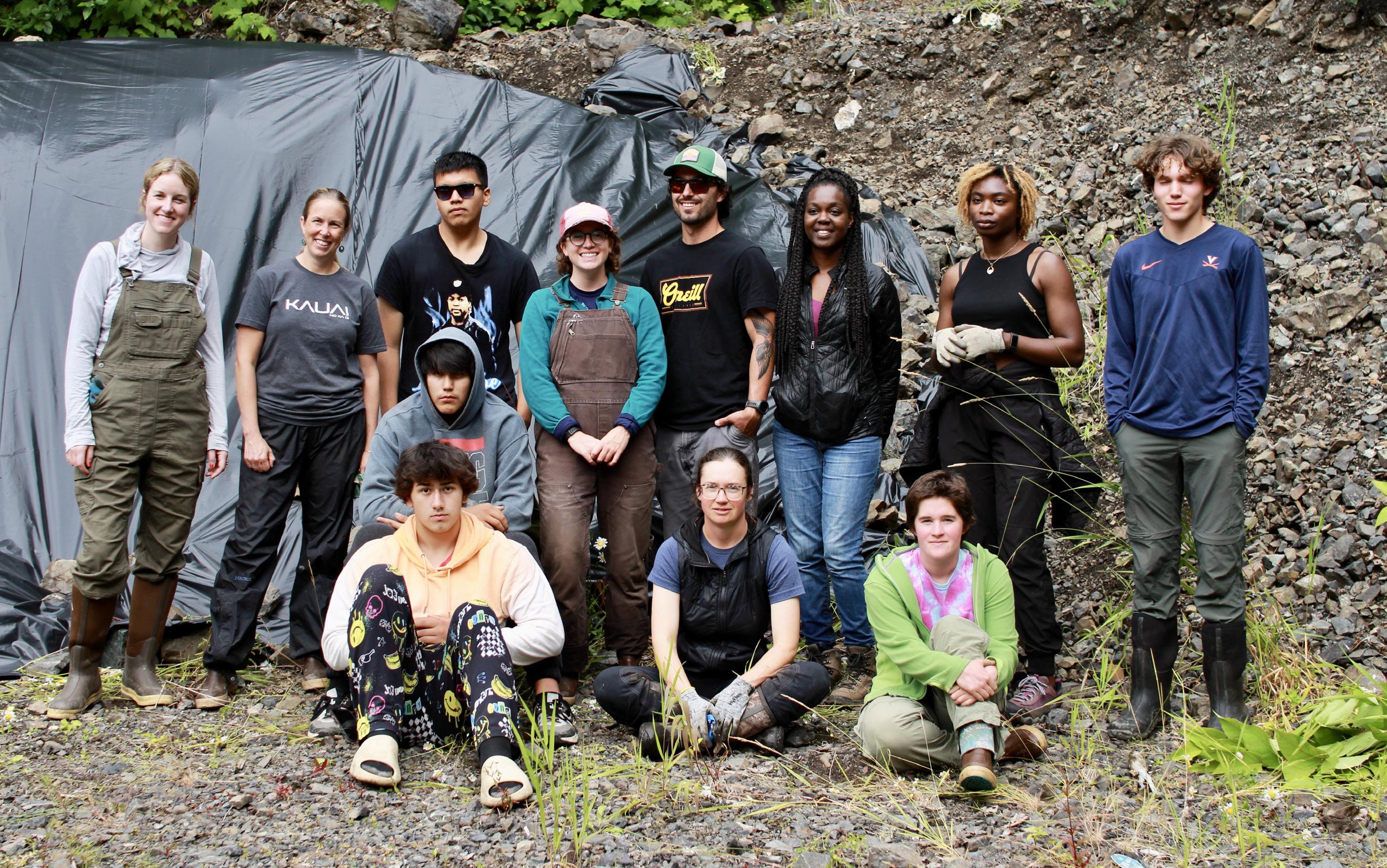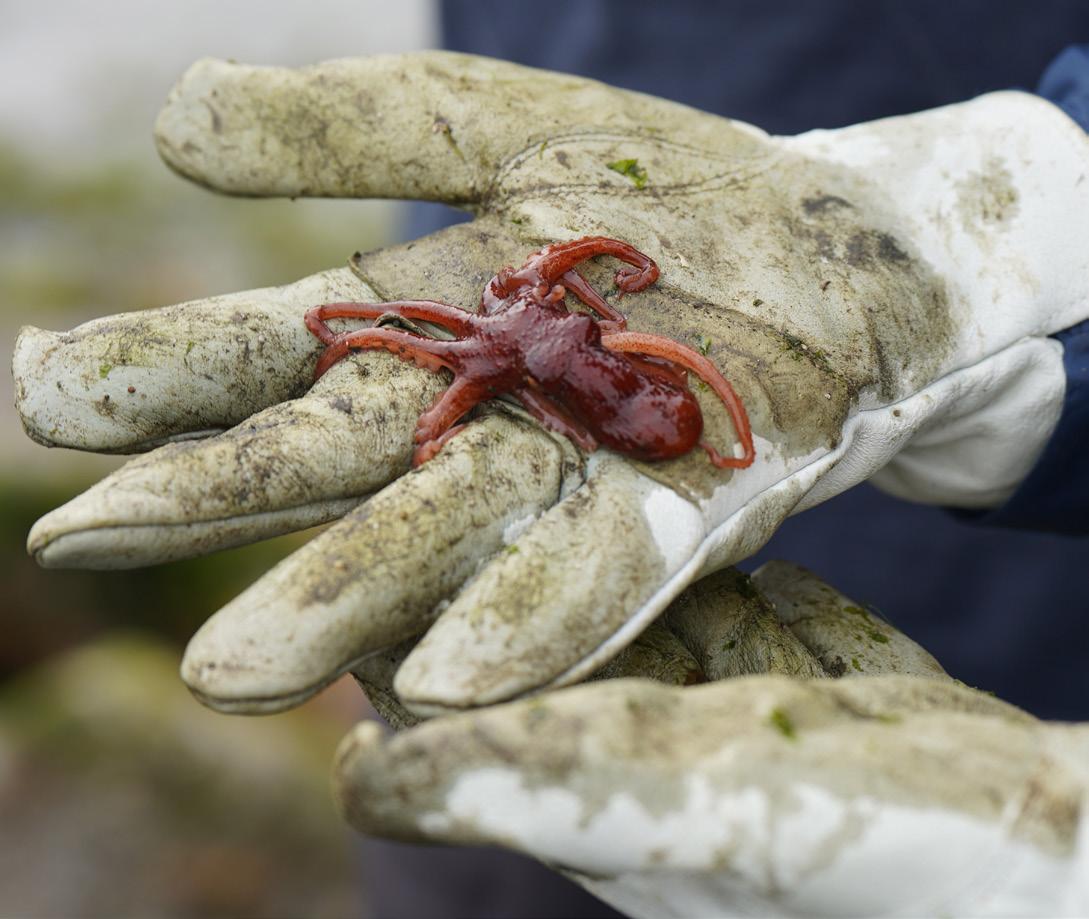
3 minute read
Sustainable Southeast Partnership: In service with our communities
By Marina Anderson, Sustainable Southeast Partnership Program Director
Throughout 2023, the Sustainable Southeast Partnership (SSP) embarked on a journey of collaboration, capacity building and community engagement, driven by its commitment to fostering sustainable development in Southeast Alaska.
SSP facilitated a series of online hangouts and an in-person retreat, focusing on networking and capacity development for Catalysts and partners. Through group sessions and facilitated conversations, participants delved into various topics, including systems leadership, building trust and effective communication in rural communities. The spring retreat in Sitka was the largest SSP gathering to date, where more than 160 partners gained skills, built trust and enjoyed ocean dips.
As the year progressed, the focus shifted to deeper community engagement and immersive learning experiences. Regional Catalysts gathered in Ḵéexʼ Ḵwaan, engaging with the community of Kake and immersing themselves in traditional activities during their annual culture camp. Discussions with community leaders and participation in cultural practices provided invaluable insights into respectful and responsible engagement in small communities.
Backed by these experiences, SSP initiated the development of a resource document on how to effectively engage in small communities, aiming to empower its network with practical insights and strategies. Additionally, plans were set for future retreats and expansions of Catalyst positions, reflecting the organization’s commitment to by Ḵaa Yahaayí Shkalneegi Muriel Reid Pacific High School garden coordinator Andrea Fraga rinses off vegetables with student Jeremiah Ward. growth and community outreach.

Simultaneously, SSP supported the Tribally led Forest Partnerships in Hoonah, Kake and on Prince of Wales Island, and the Alaska Youth Stewards program, fostering connections and providing resources for community-led projects across Southeast Alaska. These partnerships help move management action and job creation to communities who have lived in relationship with these lands and waters since time immemorial.
Later in the year, efforts were focused on strategic planning and internal capacity building. The SSP Steering Committee identified priorities to guide the network’s growth, while improvements were made in internal communication systems and staffing capacity. Enhanced external communications strategies were developed, including monthly newsletters, social media engagement, and real-time collaboration through platforms like Discord, which 200 people in the region utilized.

As the year drew to a close, the partnership celebrated milestones in Catalyst recruitment and organizational development. Three Community Catalyst positions were filled in Craig, Angoon and Skagway, a Regional Communications Catalyst position was filled and a Rural Economic Development Catalyst position was filled. Agreements were solidified, and plans were set in motion for future projects.
Looking ahead, SSP remains committed to empowering Southeast Alaska communities through strategic partnerships, capacity building and sustainable development initiatives. With a growing network of Catalysts and strengthened internal systems, the organization is poised to make a lasting impact on the region’s economic and environmental landscape.
The Kake Alaska Youth Stewards crew gets a visit from the U.S. Department of Agriculture Forest Service and learn about Japanese knotweed and removal techniques, as well as the many career pathways the Forest Service offers.










